The Whispering Valley review

- 0 Comments
Atmospheric mystery largely plateaus as a middling thriller
Horror and point-and-click adventure gaming are a match like peanut butter and chocolate: allergies notwithstanding, the perfect marriage. Even when the final product doesn’t quite hit the mark, I’ve always been able to find plenty of appeal in just about any horror adventure, and that’s exactly how I feel with Studio Chien d’Or’s perfectly competent The Whispering Valley. This panoramic node-based adventure builds a suitably spooky mood with some great moments of exploration throughout – though not without some stumbles along the way. If you’re a fan of Scratches, the Dark Fall series, or Barrow Hill, you’ll likely feel quite at home playing The Whispering Valley, even though its limited scope and minimalist story prevent the game from reaching those heights.
Late in 2021, the developers first released The Whisperer, a bite-sized first-person adventure set in the Lower Canadian wilderness circa the early 1800s, grounded by realism and yet tinged with the supernatural. I enjoyed its bleak and haunting atmosphere, but was left unsatisfied by its length, narrative ambiguity, and so-so puzzle design. However, as a prologue to something bigger, it did its job well enough to keep me invested in its follow-up game on the horizon. It’s a bit unfortunate, then, that while The Whispering Valley makes some improvements to The Whisperer’s foundation (chiefly by having a few hours of gameplay as opposed to less than one), it doesn’t do all that much else to outshine its predecessor.
The game is set decades later in the same general area, though gone is the snowbound wintry backdrop and in 1896 it’s referred to as the province of Quebec. You step into the role of a parish priest, called into action after receiving a strange letter from another priest who watches over the neighboring village of Sainte-Monique-Des-Monts. Your colleague writes of a great evil that’s been unleashed upon the populace and warns you against ever visiting, lest the same horrors be inflicted upon yourself. Of course, you spring into action and completely ignore the warning, embarking on a nighttime carriage ride to unearth the origins of the curse. This moonlit trek is well-presented (and is also one of the game’s only cutscenes), sporting some great cinematography and unsettling music. The stage is certainly set for a dreadful good time.

When you arrive at the village, it’s almost abandoned aside from a few last hangers-on who all keep you at arm’s length, preferring to remain locked up in their homes and only speaking to you through an opened window or cracked door. There’s a listlessness to the remaining residents that suggests something terrible has happened that everyone would rather forget, as though a plague of remorse has cut a gaping swath through the town – and things soon take a dark turn as the tiny population starts to dwindle further.
The Whispering Valley is meatier than The Whisperer but still falls short of a proper full-length experience, clocking in around three hours (perhaps less, if you don’t get stuck for long stretches). It’s got a clearer storyline that doesn’t get as muddled as its more experimental prologue, yet it still doesn’t feel like a wholly satisfying mystery when all is said and done. The few characters you encounter (and handful of letters that you pick up) basically spell everything out for you, right up to the end. It has its share of puzzles, but none are standouts, and a good chunk of them are fairly “been there, done that” enigmas involving cracking combination locks or finding keys to open doors.
But like I said earlier, when it comes to horror and adventure gaming, it’s hard to go too wrong, and there are plenty of bright spots here. As with its previous effort, Studio Chien d’Or does a fantastic job in setting a tone of clear and present dread. It’s actually not quite a “horror” game (and really only offers one moment that approaches jumpscare territory), but in lieu of mortal danger, it crafts a pretty chilling tale where guilt is perhaps the biggest threat of all.
The game makes novel use of light as a mechanic, which I also enjoyed. Even though the gameplay unfolds through rotating 360-degree nodes instead of free movement (just like in Myst III or Scratches), the world is rendered in realtime 3D, unusual for the genre. The benefit of this design decision is dynamic lighting, which means that to see much of anything in the game’s darker locations, you’ll have to bring out a light source. Thankfully, this action is bound to a keyboard shortcut rather than making you constantly bother with the inventory.

Early on, your only light source is a book of matches. As you progress, you’ll find other options to make seeing in the dark much easier, although once you get the candle you’re pretty much set. You can find an optional lantern late in the game, but I couldn’t see any noticeable difference in the amount of light it put out (plus, it flickered like mad in a distracting way – though I guess that might increase the tension if you’re wanting more scares).
The graphics, while modest, do a good job depicting the dilapidated town of Sainte-Monique-Des-Monts as a place that may have once felt a bit homey, but now seems absolutely cursed. A few of the locations had me constantly on edge as I slowly made my way through them, from abandoned homes to long-shuttered shops – and even a cave at the outskirts of town that I really, really did not want to go into.
Exploring this unholy corner of French Canada is the game’s main draw, and I very much enjoyed my time in the village, searching all its nooks and crannies. It’s just big enough to occasionally get lost in, but not overwhelmingly so. There are several paths that are accessible from the get-go, but still well-hidden enough to be super easy to walk right past several times before ever noticing they’re there.
Oh, and the cherry on top of this dreadful place? You can pet a dog – and a cat! While it seems to be totally optional, who would pass this up? This soothing action is a welcome reprieve from the doom-and-gloom tone that permeates the rest of the experience, and every time I passed these furry friends, I made sure to give them several scritches (partly in the hopes that good karma would somehow protect me from the unknown dooms lurking nearby).

On the narrative front, things start to fizzle a little. With character interaction kept to a minimum, much of the story develops from letters you’ll find in the homes of the town’s current and former residents. The writing isn’t bad, but these letters read less like authentic correspondence and more like clues strung together with overt exposition. There just isn't much beyond the bare minimum needed to advance the story, which gives the world and characters a sense of being underdeveloped. It’s hard to feel much emotion about these people’s tragic fates when I’m not even given enough to care about who they were in the first place.
On the puzzle side of things, none of the challenges are fresh or interesting. What’s worse is that a couple of classic hallmarks of adventure game frustration are on full display, with pixel hunting and obtuse puzzle design adding more bumps in the road. After I’d made some decent headway, The Whispering Valley stumped me for a good while just under an hour in. At this point, the village was a plethora of locked or otherwise inaccessible buildings, and I had no idea what the next step of my objective was. It turned out there was a puzzle I hadn’t solved yet because I thought I was still waiting to find a clue for it, but it had already been (very subtly) presented. It’s a “press the buttons in the right pattern” sort of thing, and the solution is actually hidden in plain sight, though at enough of a distance from the player’s perspective that it never would have occurred to me that it was a clue. In my opinion, this was poppycock. Had there been a hotspot to see the clue a little closer (like the zoomed-in views present in many other scenes in the game), it would be much more acceptable. I ended up turning the whole village upside down for a solid hour without making any progress, before finally consulting a hint elsewhere to proceed.
Oh, and the reward for this rather bewitching puzzle? A key to access a new area (oooh, at last! How exciting!) that contains … nothing but a bin of old newspaper. Really, that’s all. And this newspaper happens to be the only thing the game will let you use to start a fire in a woodstove. That’s right, in an entire village filled with copious letters, notes, and books, our hero won’t start a fire unless he finds this very specific cache of newspaper. It’s the sort of adventure game design we’d have taken for granted twenty years ago, but nowadays just feels dated and silly.
Other relics of adventure games past include gratuitous and tedious backtracking, made more painful by the long and frequent load times. There’s no map or fast travel option, and so I slightly dreaded every time I needed to cross the village’s main river, which required traversing a large handful of navigation nodes and three loading screens (which can be upwards of 15 seconds at times, even on a pretty decent PC).
There are also bugs, at least at time of writing. It seems the developers are pretty responsive to reports, so I imagine the worst ones will probably get fixed, but these hitches will likely disrupt the experience for early players. In one particularly nasty instance, all the onscreen navigation hotspots suddenly disappeared after loading my save file, keeping me eternally trapped in the village’s presbytery with no way to move or do anything. Reopening the game did nothing to solve it, which meant the only way I was able to proceed was via the nuclear option: I had to start the whole game anew, after over three hours of play (and yes, that means that adding insult to injury, I happened to be only a few actions away from completing the game). Yikes!
This perhaps could have been avoided if the game offered multiple save slots, but no. Players are expected to make do with a single save file (that shares both manual and autosave duties) – not a big deal in something much shorter like The Whisperer, but a potentially pretty big problem here. (The developers have assured me that my particular game-breaking bug has since been patched out, but it still seems needlessly limiting.)
Final Verdict
The Whispering Valley has a lot going for it. Its atmosphere is almost impeccable, and the sense of exploration quite a joy. Even when marred by technical issues and an abrupt ending, it was a world I enjoyed my time in, and when the credits rolled, I was left wanting more. I just wish it had made better use of its setting to tell a longer, twistier, spookier mystery, and that it had bolstered its gameplay with better puzzles. There’s certainly lots of room for improvement and a bit more polish, but even in its current state, that craving for a lengthier game is more of good sign than a bad one. If you’re after a grim and spooky adventure to give you some escapist fun in a most haunting locale (despite being light on story), The Whispering Valley will likely satisfy.
Hot take
With its ominous mood and fascinating setting, The Whispering Valley manages to rise a bit above its sparse narrative and ho-hum puzzle design.
Pros
- The village’s many haunting locations are a joy to explore
- Overall atmosphere is very well done
- Engaging illumination mechanics
Cons
- Short length is padded by excessive backtracking, long loading times, and tiring pixel hunting
- Puzzles feel a bit uninspired
- Story hints at great depth, but remains surface level
Sean played The Whispering Valley on PC using a review code provided by the game's publisher.


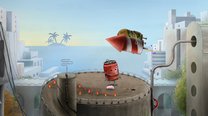

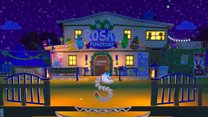

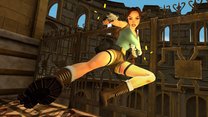

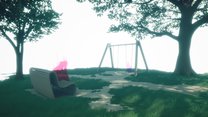
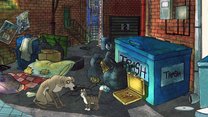
0 Comments
Want to join the discussion? Leave a comment as guest, sign in or register.
Leave a comment